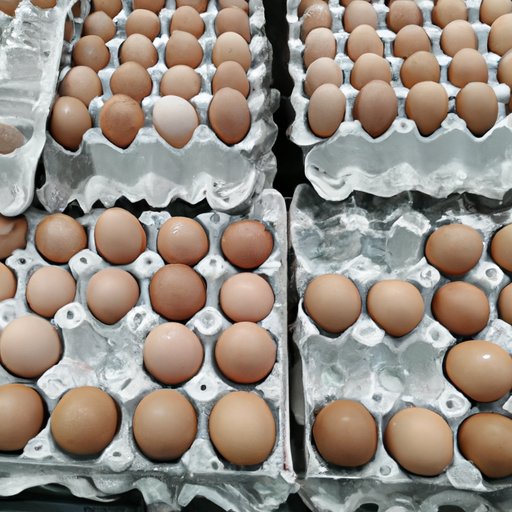Why Are Eggs So Expensive?
Eggs are a staple ingredient in almost every household across the globe. They are an affordable source of protein and a versatile ingredient in many dishes. However, in recent years, the price of eggs has skyrocketed, leaving many consumers wondering why. In this article, we explore the various factors that influence the price of eggs and provide insights into how consumers can deal with expensive egg prices.
Demand and Supply Chain for Eggs
The demand and supply chain for eggs is affected by various factors, including climate changes, consumer preferences, and agricultural practices. For example, extreme weather conditions can impact egg production and result in a decrease in supply, which causes prices to go up. On the other hand, increased knowledge about the nutritional value of eggs can lead to a rise in demand and also cause prices to increase. Additionally, the use of certain agricultural practices such as cage-free farming can add to egg production costs and cause prices to rise.
Different Types of Farming Systems and Their Impact on Cost
There are two major types of farming systems utilized for egg production: conventional and cage-free. Conventional farming involves housing thousands of hens in cages, which reduces space requirements and feeding costs. Cage-free farming, on the other hand, provides free-range access for hens and promotes animal welfare at the expense of increased production costs. The cost of implementing farming systems greatly impacts the cost of egg production. The higher the cost of production, the higher the price of the eggs on the market.
Factors that Affect the Costs of Egg Production
Several factors contribute to the cost of egg production, including feed, labor, and equipment costs. Feed represents up to 70% of the costs of egg production, and therefore, any increase in feed prices can result in higher egg prices. Additionally, labor costs, including wages and hours, can significantly affect the final cost of egg production. Increasing minimum wages and a decrease in labor availability both lead to significant increases in egg prices. Lastly, the cost of equipment such as egg incubators and cages can greatly increase egg production costs, resulting in higher prices at grocery stores.
Role of Government in Regulating Egg Prices
The government plays a vital role in regulating egg prices and controlling market fluctuations. Through policies and regulations, the government can control egg prices and protect consumers from price gouging. This is done through regulating production methods, setting price limits, and promoting export-import agreements to reduce the impact of international egg prices on local markets.
Rise of Plant-Based Alternatives and Their Ripple Effect on Egg Prices
The rise in demand for plant-based alternatives has resulted in a decrease in the market share of traditional animal-based products, including eggs. As the market share for eggs decreases, the prices also decrease. This is because egg producers would need to sell their eggs at lower prices in order to be competitive in the market. This ripple effect is felt across the entire market, causing prices to trend lower.
Impact of Seasonal Changes on Pricing
Seasonal changes play a significant role in egg prices. During holiday seasons, demand for eggs increases, resulting in a corresponding increase in egg prices. In addition, egg suppliers will take advantage of the increased demand by raising their prices, knowing that consumers are willing to pay more during holiday periods. For instance, in the United States, egg prices usually increase around Easter due to the increased demand. Extreme weather conditions can also significantly impact egg prices, for example, heatwaves and cold snaps can affect production and cause prices to rise.
Impact of International Trade, Tariffs, and Globalization
International trade and globalization also have a significant impact on egg prices. Shipping and import-export agreements influence the prices of eggs, and tariffs can add to the cost of egg imports, causing prices to rise. In addition, the spread of diseases and viruses, such as avian flu, can cause supply-chain disruptions leading to a decrease in market supply and a spike in prices.
Conclusion
In conclusion, several factors contribute to the high cost of eggs, including agricultural practices, egg production costs, government regulation, and market fluctuations. However, consumers can deal with expensive egg prices by exploring alternative options and buying locally. By understanding the various factors that impact egg prices, consumers can make informed purchasing decisions and avoid being subject to price gouging. We urge consumers to take an active role in understanding egg market prices and making informed purchasing decisions.
